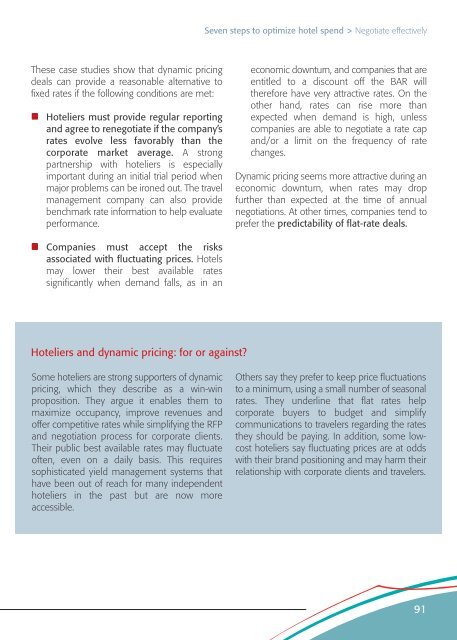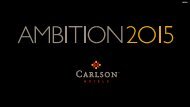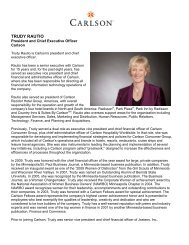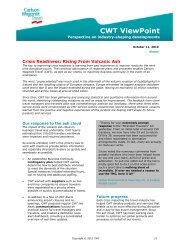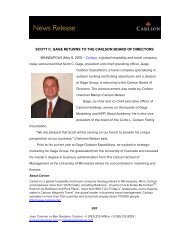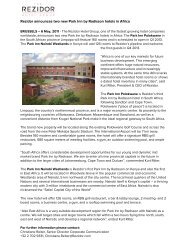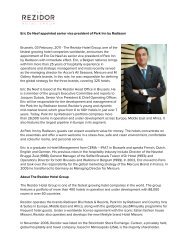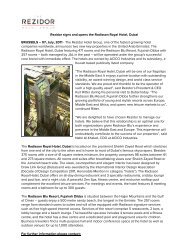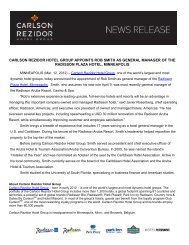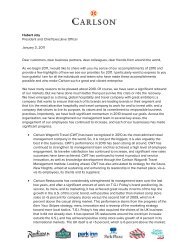Room for Savings: Optimizing Hotel Spend - Carlson
Room for Savings: Optimizing Hotel Spend - Carlson
Room for Savings: Optimizing Hotel Spend - Carlson
Create successful ePaper yourself
Turn your PDF publications into a flip-book with our unique Google optimized e-Paper software.
Seven steps to optimize hotel spend > Negotiate effectively<br />
These case studies show that dynamic pricing<br />
deals can provide a reasonable alternative to<br />
fixed rates if the following conditions are met:<br />
<strong>Hotel</strong>iers must provide regular reporting<br />
and agree to renegotiate if the company’s<br />
rates evolve less favorably than the<br />
corporate market average. A strong<br />
partnership with hoteliers is especially<br />
important during an initial trial period when<br />
major problems can be ironed out. The travel<br />
management company can also provide<br />
benchmark rate in<strong>for</strong>mation to help evaluate<br />
per<strong>for</strong>mance.<br />
economic downturn, and companies that are<br />
entitled to a discount off the BAR will<br />
there<strong>for</strong>e have very attractive rates. On the<br />
other hand, rates can rise more than<br />
expected when demand is high, unless<br />
companies are able to negotiate a rate cap<br />
and/or a limit on the frequency of rate<br />
changes.<br />
Dynamic pricing seems more attractive during an<br />
economic downturn, when rates may drop<br />
further than expected at the time of annual<br />
negotiations. At other times, companies tend to<br />
prefer the predictability of flat-rate deals.<br />
Companies must accept the risks<br />
associated with fluctuating prices. <strong>Hotel</strong>s<br />
may lower their best available rates<br />
significantly when demand falls, as in an<br />
<strong>Hotel</strong>iers and dynamic pricing: <strong>for</strong> or against?<br />
Some hoteliers are strong supporters of dynamic<br />
pricing, which they describe as a win-win<br />
proposition. They argue it enables them to<br />
maximize occupancy, improve revenues and<br />
offer competitive rates while simplifying the RFP<br />
and negotiation process <strong>for</strong> corporate clients.<br />
Their public best available rates may fluctuate<br />
often, even on a daily basis. This requires<br />
sophisticated yield management systems that<br />
have been out of reach <strong>for</strong> many independent<br />
hoteliers in the past but are now more<br />
accessible.<br />
Others say they prefer to keep price fluctuations<br />
to a minimum, using a small number of seasonal<br />
rates. They underline that flat rates help<br />
corporate buyers to budget and simplify<br />
communications to travelers regarding the rates<br />
they should be paying. In addition, some lowcost<br />
hoteliers say fluctuating prices are at odds<br />
with their brand positioning and may harm their<br />
relationship with corporate clients and travelers.<br />
91


